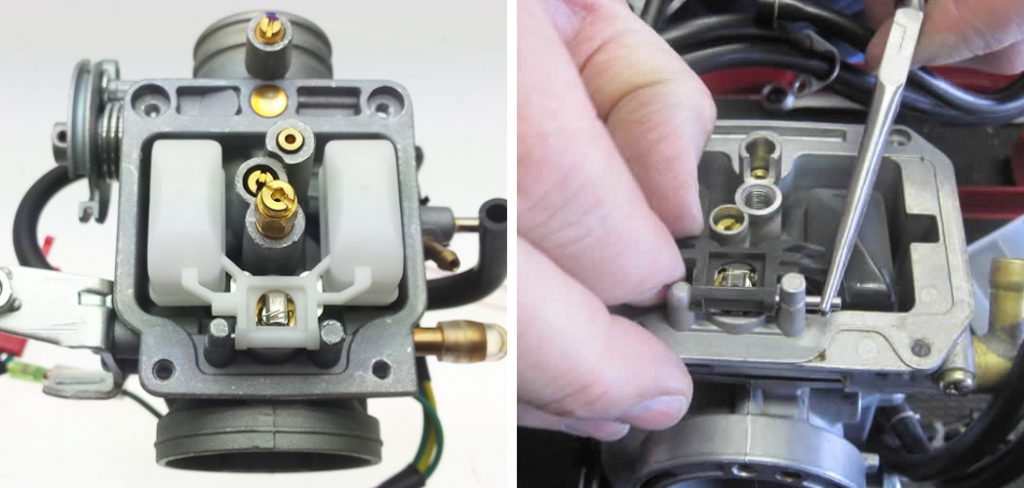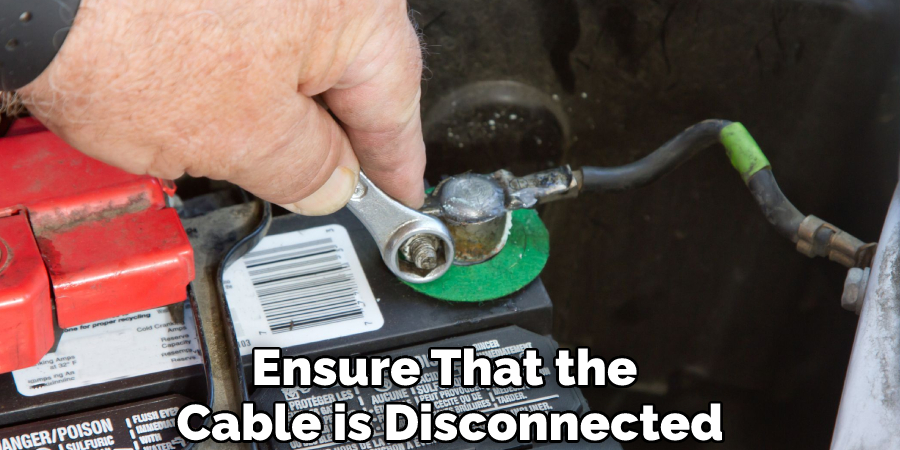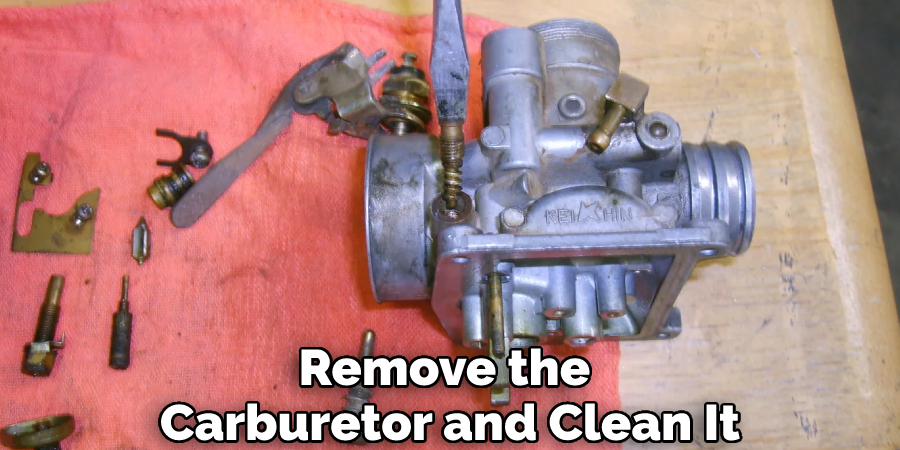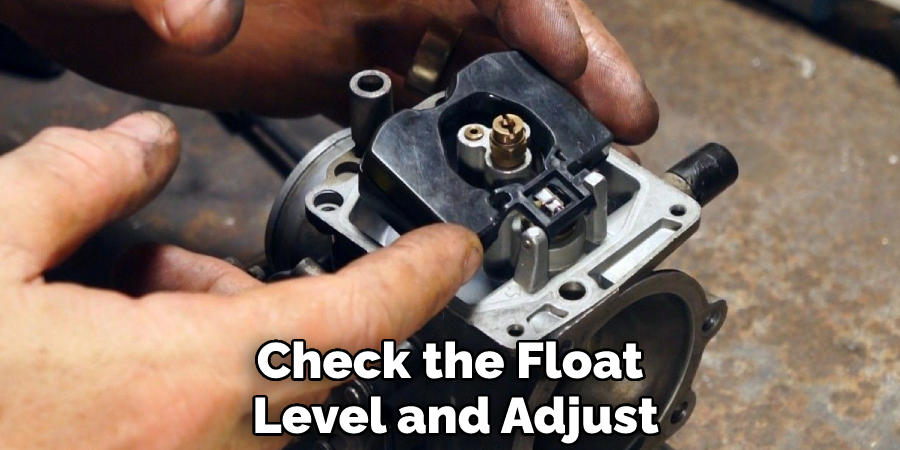If you’ve ever tried to start a car sitting for a while and it just won’t turn over, you may have had to deal with a stuck carburetor float. This can be a real pain to fix, but with some patience and the right tools, it’s doable.
In this post, we’ll walk you through the steps of how to fix a stuck carburetor float. So if your car is giving you trouble, don’t give up yet – try fixing the carburetor first!
Summary: If your carburetor is stuck, there are a few things you can do to try and fix the problem. One option is to use a plunger to try and push the float up and out of the way. If that doesn’t work, you can try using a carb cleaner or solvent to clean the area around the float and the carburetor. If those don’t work, you may need to take the carburetor apart to fix the issue.

What Causes Stuck to a Carburetor Float?
There are a few things that can cause your carburetor float to become stuck. The most common culprit is dirt and debris build-up. Over time, these particles can gum up the works and cause the float to stick in place.
Another possibility is that the float itself is damaged. This could be due to a manufacturing defect or simply wear and tear. If the float is damaged, it may not be able to move freely and could become stuck.
Finally, it’s also possible that the carburetor itself is defective. This is relatively rare, but if the carburetor isn’t functioning properly, it could cause the float to become stuck.
If your carburetor float becomes stuck, it can cause a number of problems. The float is responsible for regulating fuel flow into the carburetor, so if it’s stuck, it can cause the engine to flood or run lean. This can lead to losing power, stalling, and other issues.
10 Necessary Steps on How to Fix a Stuck Carburetor Float
Step 1: Park the Vehicle on a Level Surface and Turn Off the Engine
First, you need to park your vehicle on a level surface. Once the vehicle is in the park, turn off the engine completely. Avoid working on a hot engine, as this can lead to injury. So better to wait until the engine has cooled down completely.
Step 2: Locate the Carburetor
Then, locate the carburetor. The carburetor is usually located near the engine and is responsible for regulating air and fuel flow to the engine. Sometimes people mistake the carburetor for the air filter, but they are two different parts.
Step 3: Disconnect the Negative Battery Cable
After you have located the carburetor, disconnect the negative battery cable. This will help to prevent any electrical shorts while you are working on the carburetor. Ensure that the cable is disconnected before proceeding to the next step.

Step 4: Remove the Carburetor Bowl
Then, remove the carburetor bowl. The carburetor bowl is located beneath the carburetor and helps to collect any fuel or oil that may leak from the engine. To remove the bowl, simply unscrew it from the carburetor. Never try to pry it off, as this could damage the carburetor.
Step 5: Inspect the Carburetor Bowl for Debris
After removing the carburetor bowl, inspect it for debris blocking the float. The float is a small device inside the carburetor that helps to regulate fuel flow. If the float is blocked by debris, it will prevent fuel from flowing properly to the engine.
Step 6: Clean out the Carburetor Bowl
If you do find debris in the carburetor bowl, use a small brush to clean it out. Be sure to remove all debris, as even a small amount can block the float and cause problems. You can use a bowl of clean gas to rinse out the bowl and remove any remaining debris.
Step 7: Inspect the Carburetor Float for Damage
Once the carburetor bowl is clean, inspect the float for any damage. The float is made of metal or plastic and is attached to the carburetor by a small rod. If the float is damaged, it will need to be replaced. Never try to repair a damaged float, as this could cause even more problems.
Step 8: Clean the Carburetor Float
If the carburetor float is not damaged, you can clean it with a cloth. Be sure to remove any dirt or debris on the float. You need to make sure that the carburetor float can move freely. Otherwise, it will not be able to regulate the fuel level in the carburetor properly.
Step 9: Reattach the Carburetor Bowl
Once the carburetor float is clean, you can reattach the carburetor bowl. Be sure to hand-tighten the bowl, as over-tightening can damage the carburetor. There you can finish attaching the carburetor and test it out. Don’t forget to check for any leaks!

Step 10: Reconnect the Negative Battery Cable
After you have finished testing the carburetor, reconnect the negative battery cable. This will help to prevent any electrical problems. And also, it will help to keep your car’s engine from stalling. Ensure all the wires are properly connected and no bare metal touching.
This guide should help you fix a stuck carburetor float quickly and easily. Remember always to take care when working with small parts, and be sure to consult a professional if you’re unsure of anything. With patience and attention to detail, you’ll have your carburetor running smoothly. Thanks for reading!
Safety Tips to Fix a Stuck Carburetor Float
- Before starting any work on the carburetor, disconnect the spark plug wire to prevent the engine from accidentally starting.
- Do not attempt to repair the carburetor float while the engine is running or hot.
- Never use your hands to clean a carburetor float. Use only a soft brush or compressed air to avoid damaging the float.
- Maintain all the safety measures while working, such as wearing gloves and eye protection.
- Do not attempt to repair the carburetor float if you are not familiar with its working.
- Locate the carburetor float bowl and identify the problem. The most common reason for a stuck carburetor float is gum or varnish build-up on the needle valve.
- Use only a soft brush or compressed air to clean the carburetor float. Do not use any sharp objects that can damage the float.
How Do I Know if My Carburetor Float is Stuck?
If your carburetor float is stuck, it can cause a number of issues with your engine. The most common symptom of a stuck carburetor float is a loss of power or stalling when you try to accelerate. Other symptoms can include poor fuel economy and strange engine noises. Sometimes you may notice a fuel smell coming from the engine or see fuel leaking from the carburetor.
What Are the Best Methods to Fix a Stuck Carburetor Float?
There are a few different ways that you can go about fixing a stuck carburetor float. The best method will depend on the severity of the problem and the type of carburetor you have.
One popular method is to remove the carburetor and clean it out thoroughly simply. This will remove any build-up or debris causing the float to stick.

Another option is to use carburetor cleaners or solvents. These can help to dissolve any build-up or debris that is causing the float to stick.
If the problem is severe, you may need to replace the carburetor float altogether. This is a more drastic measure, but it may be necessary to get your carburetor working properly again.
No matter which method you choose, it is important to make sure that you clean or replace the carburetor float as soon as possible. A stuck float can cause serious engine problems and should not be ignored.
How Long Does a Carburetor Float Last?
The carburetor float is brass or plastic and houses a small needle valve. Over time, the float can become stuck in the “open” position, causing fuel to leak into the engine. If your carburetor float is stuck, it will need to be replaced. Otherwise, your engine will run too rich and may eventually flood.
Why Does My Carb Keeps Flooding?
A carburetor float can become stuck for a variety of reasons. The most common reason is when the fuel level in the float bowl drops too low, causing the float to rest on the needle valve and prevent it from closing. This will allow fuel to continue flowing into the carburetor, flooding the engine. Other causes can include a sticking Needle Valve or a damaged Float.
If your carburetor is flooding, the first thing you’ll want to do is check the fuel level in the float bowl. If it’s low, simply refill it and see if that solves the problem. If the fuel level is fine, you’ll need to inspect the carburetor float and needle valve for damage.
The carburetor float is a small, buoyant device that sits in the float bowl of the carburetor. Its job is to keep the fuel level at a constant height so the engine can draw in the proper amount of fuel. If the float becomes stuck, it can prevent the needle valve from closing, causing the carburetor to flood.
Conclusion
So, you can avoid a carburetor float to stuck by cleaning it regularly and making sure that the float chamber is free of debris. You should also check the float level and adjust it if necessary.

If you read the following article how to fix a stuck carburetor float, you will know what to do if your carburetor float is stuck. This article covers the symptoms of a stuck carburetor float, the best methods to fix it, and how to prevent it from happening again. Thanks for reading!
